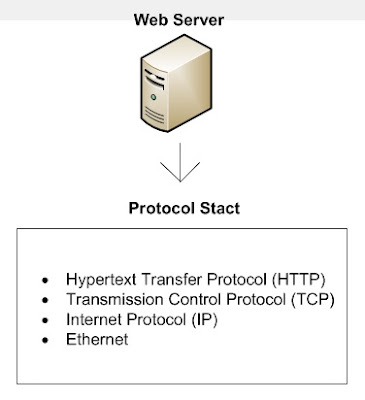Here we describe the protocols :
Application Protocol : A common protocol that governs how a web server and a web client interacting called Hypertext Transfer Protocol, or better known as HTTP. Content and format of requests and responses exchanged between client and server is defined by this protocol. HTTP is applied on both the client and the software as part of the application. This protocol also relies on other protocols to govern how messages are transported between the client and the server.
Transport Protocol : Protocols that manage individual conversations between web servers and web clients is the Transmission Control Protocol, or TCP commonly abbreviated. This transport protocol divides the HTTP messages into several smaller parts known as segments, to be sent to the client destination. On the other hand, the protocol is also responsible for controlling the size and the rate at which messages are exchanged between the server and the client.
Internetwork Protocol : Internet protocol, or better known as IP is the most common internetwork protocol. Internet protocols have a role in taking the formatted segments from TCP, and then encapsulated into packets, and subsequently placing the appropriate address and choose a path to the destination host.
Network Access Protocols : Data link management and the physical transmission of data on the media is the main function of network access protocols. Taking a package of internet protocol (IP) and then format it to be transmitted through the media is the main function of the data link management. Then that govern how the signals sent through the media and how they diinterprtetasikan by the receiving client is the responsibility of the physical transmission of data on the media.


0 Response to "The Interaction of Protocols"
Post a Comment